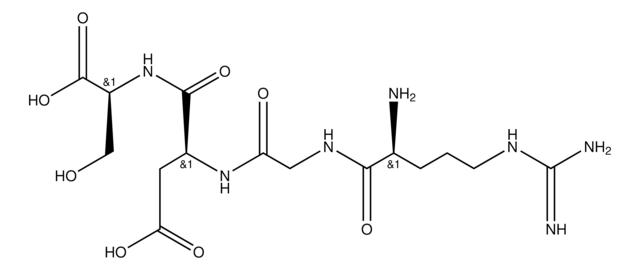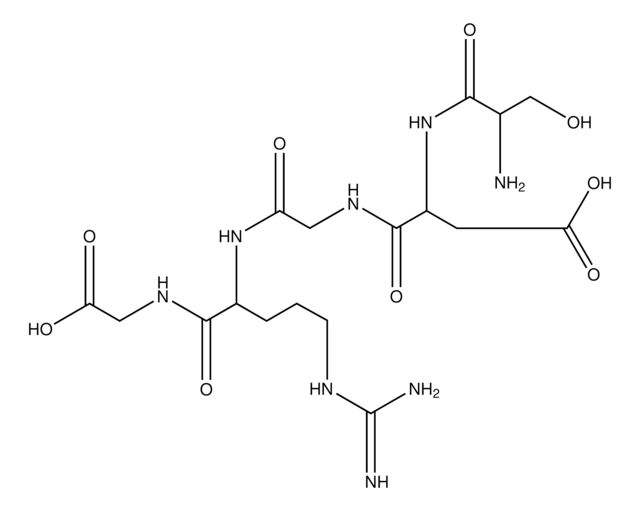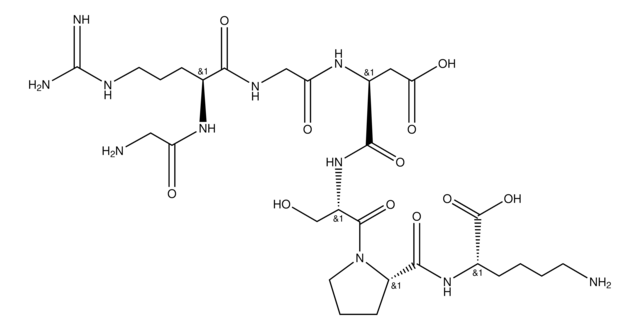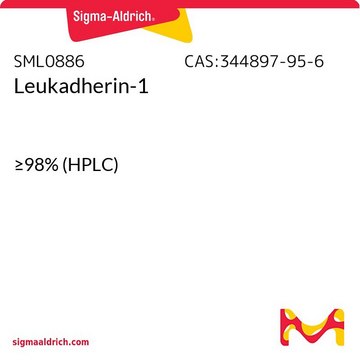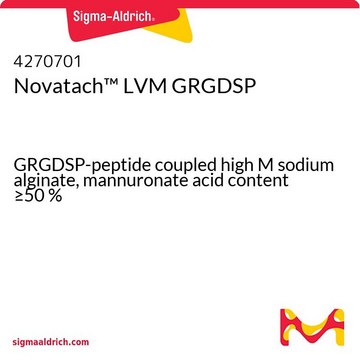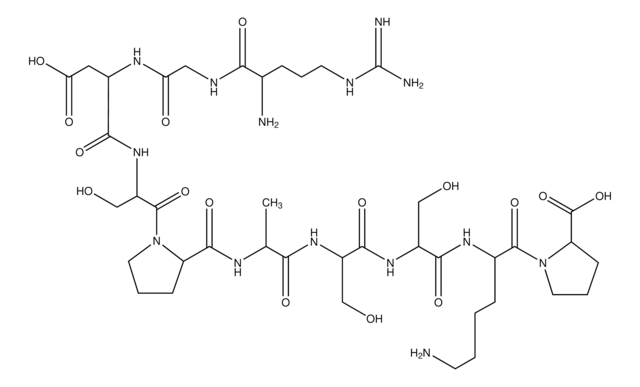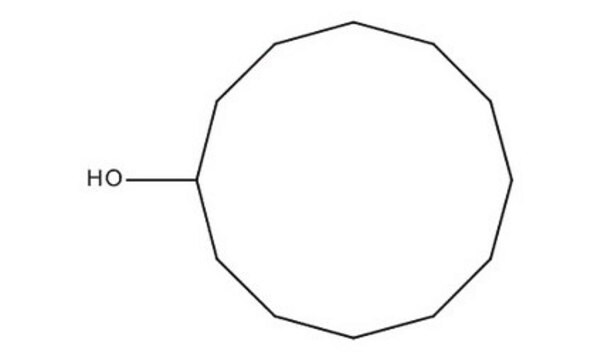G4391
Gly-Arg-Gly-Asp-Ser
≥97% (HPLC)
About This Item
Productos recomendados
Nivel de calidad
Ensayo
≥97% (HPLC)
Formulario
powder
composición
Peptide content, ≥60%
técnicas
blocking: suitable
cell culture | mammalian: suitable
temp. de almacenamiento
−20°C
cadena SMILES
NCC(=O)N[C@@H](CCCNC(N)=N)C(=O)NCC(=O)N[C@@H](CC(O)=O)C(=O)N[C@@H](CO)C(O)=O
InChI
1S/C17H30N8O9/c18-5-11(27)23-8(2-1-3-21-17(19)20)14(31)22-6-12(28)24-9(4-13(29)30)15(32)25-10(7-26)16(33)34/h8-10,26H,1-7,18H2,(H,22,31)(H,23,27)(H,24,28)(H,25,32)(H,29,30)(H,33,34)(H4,19,20,21)/t8-,9-,10-/m0/s1
Clave InChI
RGNVSYKVCGAEHK-GUBZILKMSA-N
Información sobre el gen
human ... ITGB3(3690)
¿Está buscando productos similares? Visita Guía de comparación de productos
Amino Acid Sequence
Descripción general
Aplicación
- as an antigen to determine whether integrin α4 or α5 hinders the adhesion of day 3 postirradiation thymocytes to thymic epithelial cells, in mice
- for the treatment of collagen IV-coated dishes to study the role of integrins α1, αv, β1, and β3 in Sca-1+ progenitor cell differentiation into SMCs (smooth muscle cells)
- as a blocking peptide for the pre-incubation of Nisseria meningitides strains, to perform blocking experiments to study the interactions between these bacterial strains and fibronectin
- for the pre-treatment of EL-4 cells infected by AdCMV-GFP (cytomegalovirus-green fluorescent protein), to study whether interaction with cellular integrins is essential for the transduction of adenovirus
Acciones bioquímicas o fisiológicas
Código de clase de almacenamiento
11 - Combustible Solids
Clase de riesgo para el agua (WGK)
WGK 3
Punto de inflamabilidad (°F)
Not applicable
Punto de inflamabilidad (°C)
Not applicable
Equipo de protección personal
Eyeshields, Gloves, type N95 (US)
Elija entre una de las versiones más recientes:
¿Ya tiene este producto?
Encuentre la documentación para los productos que ha comprado recientemente en la Biblioteca de documentos.
Los clientes también vieron
Nuestro equipo de científicos tiene experiencia en todas las áreas de investigación: Ciencias de la vida, Ciencia de los materiales, Síntesis química, Cromatografía, Analítica y muchas otras.
Póngase en contacto con el Servicio técnico
